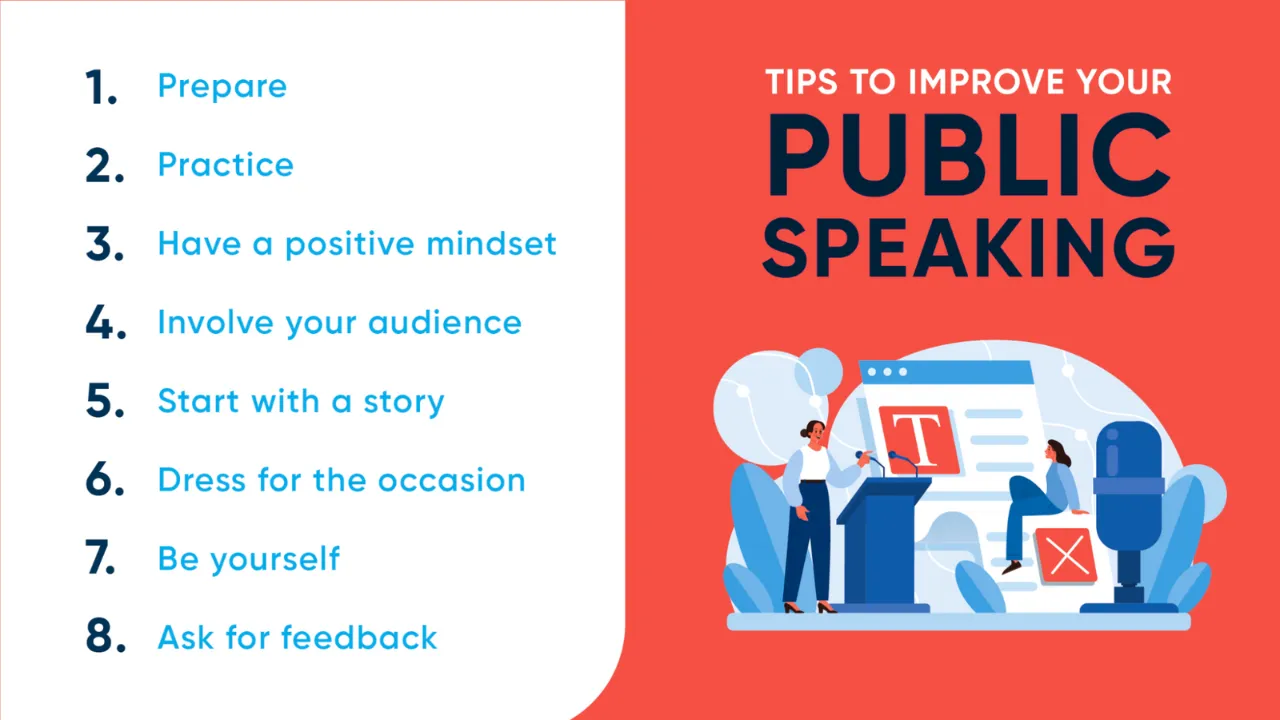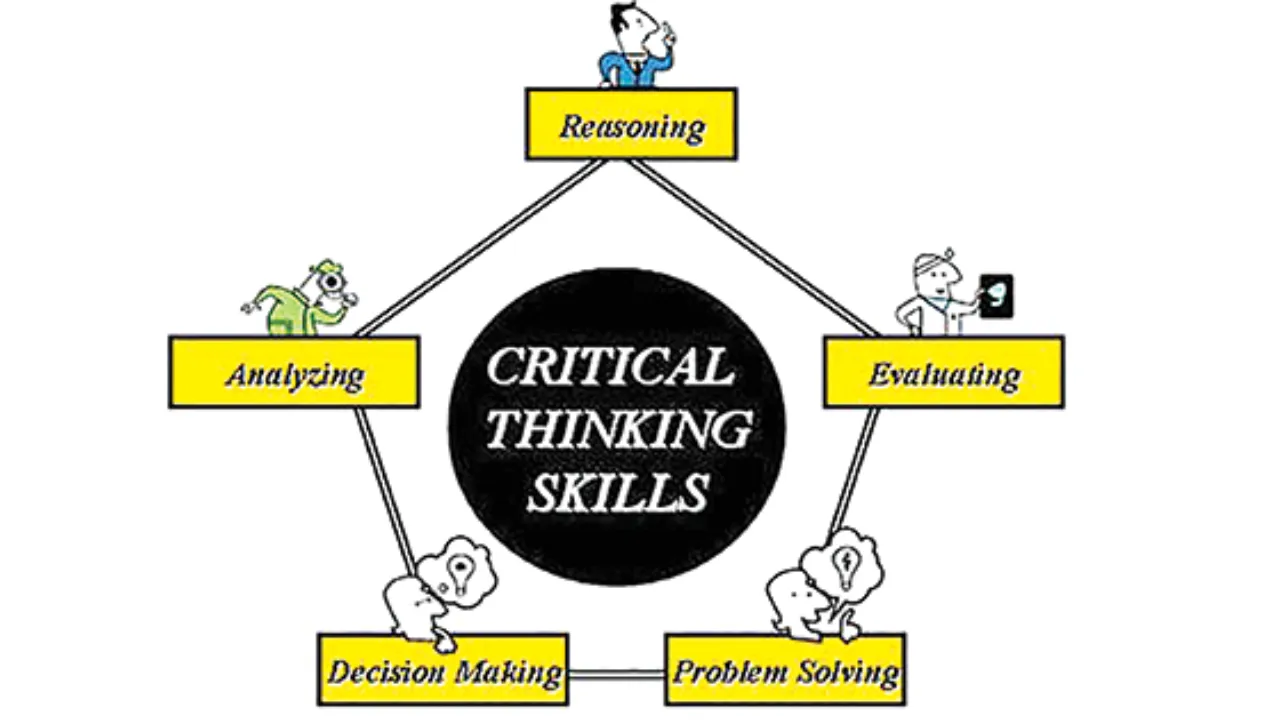Public Speaking Tips for Beginners: Standing in front of an audience and delivering a speech can be one of the most nerve-wracking experiences for many people. Even experienced professionals feel a wave of nervousness before addressing a crowd. But here’s the good news: public speaking is a skill that can be learned and refined over time. With the right mindset, preparation, and practice, anyone can become an effective speaker.
In this article, we’ll share practical and proven public speaking tips for beginners that will help you build confidence, engage your audience, and speak with clarity. Whether you’re preparing for a school presentation, a work meeting, or a community event, these tips will guide you every step of the way.
Public Speaking Tips for Beginners
Learning how to speak in public is not about perfection—it’s about progress. These public speaking tips for beginners focus on preparation, delivery, content, and mindset. By applying these techniques, you’ll not only improve your speaking ability but also learn how to connect with your audience and leave a lasting impression.
Overview Table
| Area | Key Focus |
| Preparation | Know your audience, research your topic, outline and rehearse your speech |
| Delivery Techniques | Eye contact, posture, voice modulation, managing nerves |
| Engaging Content | Start strong, keep it simple, use stories, interact with your audience |
| Additional Tips | Record yourself, get feedback, observe others, focus on your message |
Preparation and Planning
One of the biggest mistakes beginners make is underestimating the value of preparation. The more prepared you are, the more confident you’ll feel when it’s time to speak.
Start by understanding your audience. Who are they? What do they care about? Tailor your message to their interests and expectations. Next, do your homework on the topic. A well-researched presentation adds credibility and allows you to answer questions with confidence.
Create a clear outline with an introduction, body, and conclusion. Your introduction should grab attention, the body should provide value, and the conclusion should leave a lasting message. Rehearse your speech several times—out loud, in front of a mirror, and with friends or family. Practicing in different settings can also help reduce anxiety on the actual day.
Effective Delivery Techniques
Delivery is just as important as content. Even the best-written speech can fall flat if it’s delivered without energy or connection.
Start with eye contact. Look at various people in the audience rather than staring at one spot or avoiding their gaze altogether. This builds trust and keeps your listeners engaged.
Good posture and body language also matter. Stand tall, use hand gestures naturally, and avoid fidgeting. Moving with purpose can add emphasis to your points and keep you grounded.
Your voice should be clear and expressive. Vary your tone to avoid sounding monotone. Speak at a steady pace—slow enough to be understood, but not so slow that you lose momentum. Don’t be afraid to pause. Pauses can give your audience time to absorb your message and give you a moment to breathe.
Lastly, accept nervousness as part of the process. Take deep breaths, visualize a successful talk, and remind yourself that you’re there to share something valuable.
Creating Engaging Content
The content of your speech is what delivers the message, so it must be clear, relevant, and interesting.
Start with a strong opening. This could be a question, a surprising fact, or a personal story—something that grabs attention right away. Follow this with the core of your speech. Keep your language simple and avoid technical jargon unless you’re sure your audience will understand it.
Stories are a powerful way to connect with listeners. People remember stories more than facts. Sharing personal experiences or relevant examples can make your message more relatable and memorable.
If you’re using visual aids like slides or images, keep them clean and straightforward. Don’t overload slides with text or read directly from them. Visuals should support your message, not replace it.
Engage your audience by asking questions, encouraging participation, or creating moments of interaction. Make them feel involved rather than just talked at. And when wrapping up, summarize your main points and end with a strong, memorable closing thought or call to action.
Bonus Tips for Improvement
Improvement comes with feedback and self-awareness. Record your practice sessions so you can evaluate your body language, tone, and pacing. You might notice things you wouldn’t catch otherwise.
Ask for feedback from people you trust. Constructive criticism can help you refine your message and delivery. Also, watch experienced speakers—online or in person—and take notes on what makes them effective. What gestures do they use? How do they transition between points? What makes their delivery feel natural?
Practice in different environments, especially ones similar to your actual presentation setting. The more familiar you are with your surroundings, the more comfortable you’ll feel.
Most importantly, keep your focus on your message. Don’t worry about being perfect. Aim to communicate clearly and authentically.
FAQs
How do I overcome the fear of public speaking?
Start small, prepare thoroughly, and practice often. Deep breaths, positive thinking, and visualizing success can help ease nerves.
What’s the best way to structure a speech?
Use a simple structure: an attention-grabbing introduction, a clear and informative body, and a strong conclusion.
Should I memorize my entire speech?
Memorizing key points is helpful, but aim to understand your message deeply rather than memorizing word for word.
How can I keep the audience engaged?
Use stories, ask questions, involve your audience, and show enthusiasm for your topic.
What if I make a mistake while speaking?
Keep going. Most audiences are forgiving and may not even notice. Pause, regroup, and move on confidently.
Final Thought
Public speaking may feel intimidating at first, but it’s a skill that can be developed with time and effort. By following these public speaking tips for beginners, you’ll become more confident, clearer in your message, and more effective in delivering it. Every great speaker was once a beginner—so start small, stay committed, and celebrate your progress along the way.
If this article helped you, share it with others or drop a comment with your favorite speaking tip. You can also explore more communication guides and tools to boost your confidence even further.







